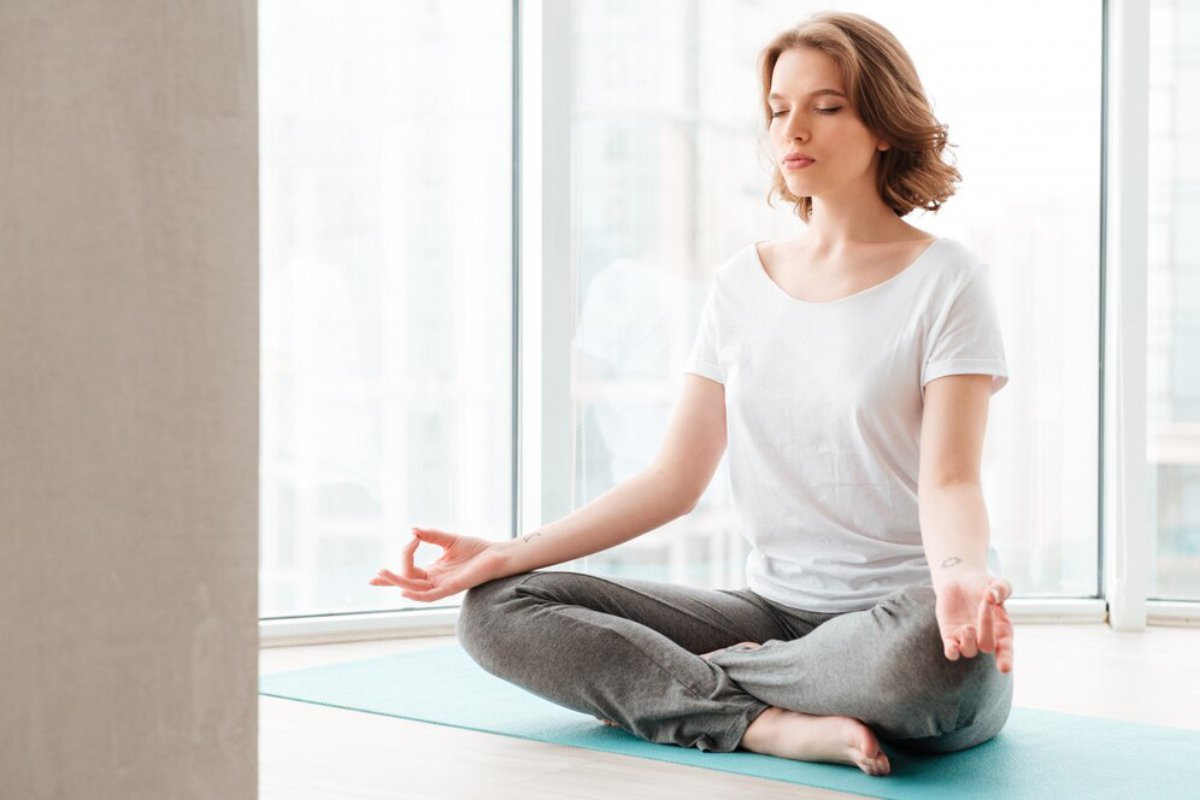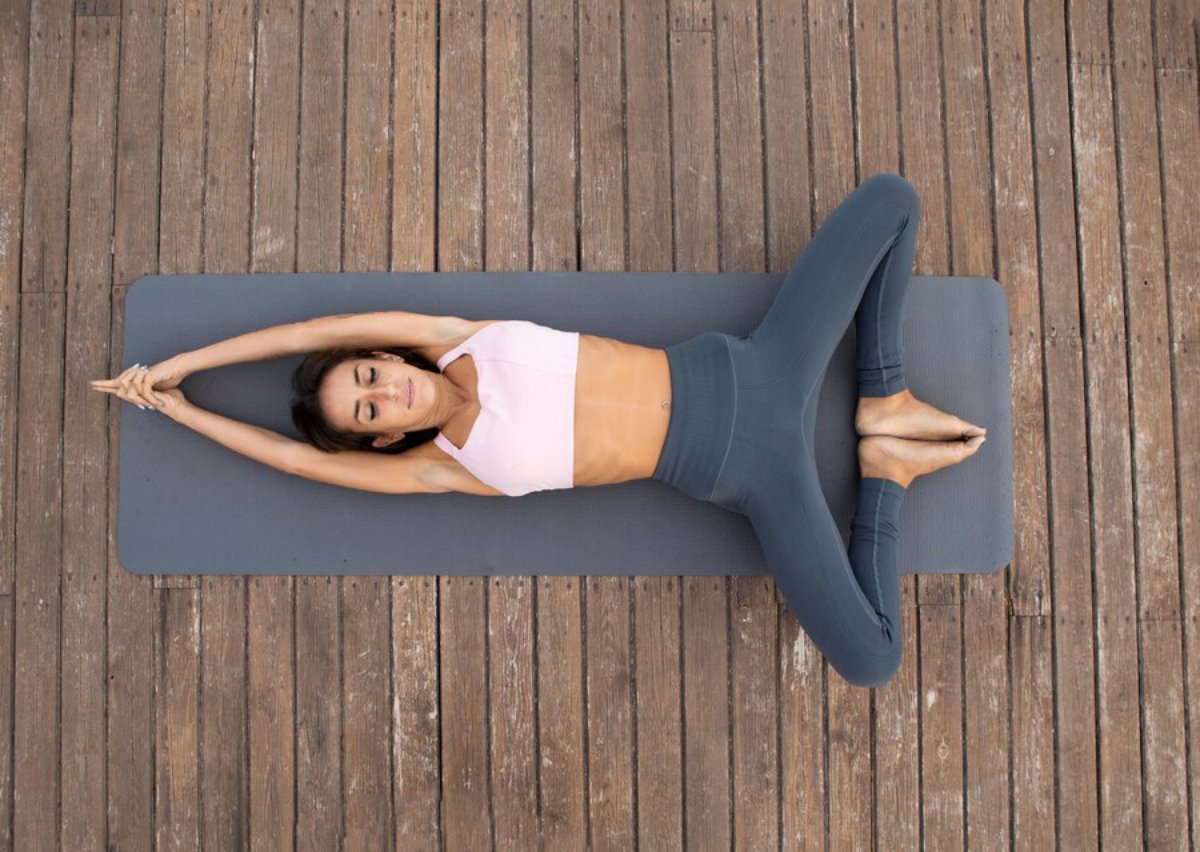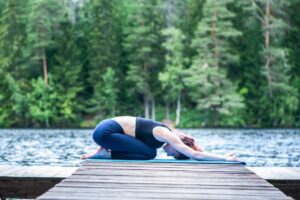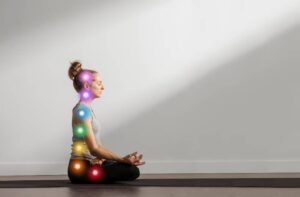The Yoga Blogs

Yoga Poses to Manage Anxiety and Enhance Clarity
Do you know that tight feeling in your chest? Thoughts racing, making it hard to focus? That’s anxiety, and it’s more common than we think. Whether it hits before a big meeting or lingers without cause, anxiety clouds your mind and makes emotional balance feel out of reach.
But what if you could pause? Not by pushing through or numbing, but by tuning in. That’s where yoga comes in.
Yoga for anxiety isn’t just about flexibility. It’s a practice grounded in research that helps your mind and body find balance. With the right poses and breathwork, you can lower stress hormones, clear mental fog, and create a sense of peace.
In this article, we’ll look at how yoga can ease anxiety. We’ll highlight poses that boost clarity. Plus, we’ll share a step-by-step guide to finding emotional balance—one breath at a time.
Why Yoga Works: The Science Behind Emotional Balance
Calming the Nervous System
When anxiety strikes, your sympathetic nervous system kicks in, triggering “fight or flight.” This leads to a fast heart rate, shallow breathing, and racing thoughts.
Yoga activates the parasympathetic nervous system, the “rest and digest” mode. This shift slows your heart rate, deepens your breath, and lowers cortisol levels.
A 2018 study in Frontiers in Psychiatry showed that regular yoga practice can reduce anxiety. It also helps improve emotional regulation across different groups of people.
Bridging the Mind-Body Gap
Anxiety can make you feel disconnected from your body. Yoga helps by grounding your awareness in physical sensations. Moving through poses, focusing on breath, and observing your feelings cultivates mindfulness.
Being aware helps clear your mind and strengthen your emotions, even when life gets chaotic.
Getting Started: Creating a Space for Calm
Before you practice, set up a space that fosters relaxation and reflection. You don’t need much—just a few simple elements:
- Quiet area free from distractions
- Soft lighting or natural light
- Yoga mat or soft surface
- Comfortable clothing
- Optional calming music or ambient sounds
Your practice doesn’t need to last long. Even 10 to 20 minutes of focused movement and breath can help an anxious mind.
8 Yoga Poses to Ease Anxiety and Improve Clarity
Here are poses chosen for their calming, grounding, and clarity-boosting effects. You can flow through them or select a few based on your needs.

1. Easy Pose with Breath Awareness (Sukhasana)
This seated position promotes inward focus and breath connection—key tools for calming anxiety.
How to do it:
- Sit cross-legged, keeping your spine straight.
- Rest your hands on your knees or thighs.
- Close your eyes and concentrate on your breath.
- Inhale deeply through your nose, exhale slowly through your mouth.
Benefits:
- Centres the mind
- Encourages mindfulness
- Sets the tone for clarity
Try this: Count each breath to 10, then start over. It’s harder than it seems but very effective.
2. Cat-Cow Stretch (Marjaryasana-Bitilasana)
This gentle movement eases tension in the back, neck, and shoulders—common areas of stress.
How to do it:
- Get on all fours, hands under shoulders, knees under hips.
- Inhale: arch your back, lift your chest and tailbone (Cow).
- Exhale: round your spine, tuck your chin (Cat).
- Repeat for 5–10 slow breaths.
Benefits:
- Improves breath control
- Relieves physical tension
- Connects breath to movement
Insight: The rhythm creates a meditative flow, quieting the mind and energising the body.
3. Child’s Pose (Balasana)
This pose helps the whole body relax. It encourages letting go and releasing emotions.
How to do it:
- Kneel with big toes touching, knees apart.
- Sit back on your heels and fold forward, extending your arms or resting them by your sides.
- Rest your forehead on the mat and breathe.
Benefits:
- Calms the nervous system
- Gently stretches the back and hips
- Promotes introspection
Tip: Stay for 2–3 minutes, letting your breath slow and deepen with each exhale.
4. Standing Forward Fold (Uttanasana)
This pose brings blood to the brain, helping reset thoughts and reduce overstimulation.
How to do it:
- Stand tall, then hinge at the hips and fold forward.
- Let your arms dangle or hold opposite elbows.
- Keep a slight bend in your knees if needed.
Benefits:
- Relieves mental fatigue
- Stretches hamstrings and lower back
- Grounds scattered energy
Insight: Picture your worries dripping down to the floor. This simple image helps you let go of emotions.
5. Legs-Up-the-Wall (Viparita Karani)
This gentle inversion calms the heart rate and soothes overactive nerves.
How to do it:
- Sit sideways next to a wall, then swing your legs up while lying down.
- Rest your arms by your sides, palms up.
- Close your eyes and stay for 5–10 minutes.
Benefits:
- Reduces stress and fatigue
- Balances circulation
- Supports mental and emotional reset
Optional: Place a folded blanket under your hips for added comfort.

6. Reclining Bound Angle Pose (Supta Baddha Konasana)
This open, supported pose fosters emotional vulnerability in a safe way.
How to do it:
- Lie on your back.
- Bring the soles of your feet together, letting your knees fall open.
- Use cushions under your knees if needed.
Benefits:
- Opens the heart and hips
- Releases anxiety stored in the body
- Promotes relaxation and clarity
Tip: Place one hand on your heart and one on your belly—breathe into the space between them.
7. Seated Forward Bend (Paschimottanasana)
This inward-folding pose supports introspection and releases mental tension.
How to do it:
- Sit with legs extended.
- Inhale to lengthen your spine, exhale to fold forward.
- Rest your hands wherever they reach comfortably.
Benefits:
- Calms the mind
- Alleviates anxiety and irritability
- Enhances emotional balance
Insight: Focus on your breath instead of depth. Let go, don’t force.
8. Corpse Pose (Savasana)
This is where your body absorbs the benefits and your mind settles into clarity.
How to do it:
- Lie flat on your back, arms relaxed by your sides.
- Let your feet fall outward.
- Close your eyes and breathe gently.
Benefits:
- Deep relaxation
- Emotional reset
- Mental clarity
Try this: Scan your body from head to toe, releasing tension with each breath.
Breathing Techniques to Anchor Your Mind
Movement is helpful, but breath is the key to clarity and emotional balance. Here are two simple techniques you can use anytime:
Box Breathing
- Inhale for 4 counts.
- Hold for 4 counts.
- Exhale for 4 counts.
- Hold for 4 counts.
- Repeat for 3–5 minutes.
This method helps reduce stress and improve focus.
Alternate Nostril Breathing (Nadi Shodhana)
- Use your thumb to close your right nostril.
- Inhale through your left.
- Close the left, exhale through the right.
- Inhale right, exhale left.
- Continue for 5 minutes.
This balances the brain hemispheres and brings clarity.
A Personal Story: From Chaos to Calm
Some years ago, I was caught in sleepless nights and racing thoughts. My job was stressful, and my relationships were strained. My chest felt tight daily.
One night, I found a short YouTube yoga video, hoping it would help me sleep. That first session was awkward—stiff movements, racing thoughts. But after a week of practice, something changed. I began sleeping better, feeling more grounded, and handling challenges with grace.
Now, yoga is how I recalibrate—physically, mentally, and emotionally. It doesn’t “fix” anxiety, but it gives me tools to face it with clarity and calm.
Find Your Centre, One Pose at a Time
Anxiety can feel like an unending storm. But through yoga, you’re not just managing symptoms; you’re learning to pause, observe, and return to yourself. You’re building resilience, finding emotional balance, and nurturing mental clarity. This helps you navigate life with confidence.
You don’t need a perfect practice or fancy gear. Just a bit of space, your breath, and a willingness to begin.
So why not start today? Roll out your mat, try a few poses, and give your nervous system the calm it craves. Share your favourite clarity-enhancing yoga practice in the comments, or pass this along to a friend who might need it. And don’t forget to subscribe for more wellness insights grounded in science and heart.
Because peace of mind isn’t a destination—it’s a practice. And you’re already on your way.









